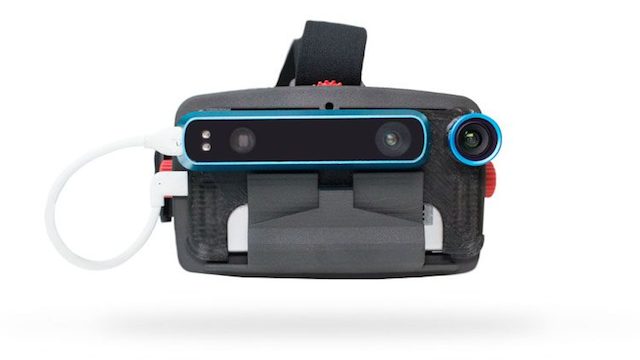Occipital could be the iPhone 7's answer to Samsung Gear VR
Giving Apple's iPhone some proper VR smarts

If you're an Apple device user, whether that's with an iPhone or a Mac, it's easy to get VR envy. Neither the Oculus Rift or HTC Vive are well suited to pairing with Mac GPUs, while iPhone doesn't have an answer to Samsung Gear VR beyond low-rent Google Cardboard knock-offs.
Occipital thinks it can fix that problem, at least as far as the iPhone is concerned. After a very successful Kickstarter campaign in 2013, it's announced the release of its iPhone-focussed VR Dev Kit, which looks to offer some very impressive results.
It may, in fact, offer boundary-free VR exploration, like a HTC Vive without the PC headset's inherent limitations.
Positional tracking for mobile
The VR Dev Kit consists of two core parts - the Structure Sensor and the Bridge Engine.
The Structure Sensor acts as a room mapping tool. Using its camera system, it's able to map out a room's walls and its furniture, feeding information back to the Bridge Engine. This is then able to build a virtual recreation of the room, even taking obstacles into account - either featuring them in a context-sensitive way based on the experience being built, or simply to point out potential bump-spots as you approach.
Paired with a mobile device, these two parts working in tandem effectively have the potential to offer limitless VR movement - not constricted by the corner-of-the-room sensors HTC Vive relieves on, for instance.
As you'd imagine from a dev kit, it's very much aimed at...well...developers. Priced at $500 (about £385 / AU$650), the kit is strapped to the back of an iPhone in order to test out mobile VR experiences. But the plan is to eventually licence the tech out so that hardware manufacturers can make iPhone peripherals supporting the Occipital experiences, or standalone HMDs of their own.
Sign up for breaking news, reviews, opinion, top tech deals, and more.

Gerald is Editor-in-Chief of Shortlist.com. Previously he was the Executive Editor for TechRadar, taking care of the site's home cinema, gaming, smart home, entertainment and audio output. He loves gaming, but don't expect him to play with you unless your console is hooked up to a 4K HDR screen and a 7.1 surround system. Before TechRadar, Gerald was Editor of Gizmodo UK. He was also the EIC of iMore.com, and is the author of 'Get Technology: Upgrade Your Future', published by Aurum Press.
